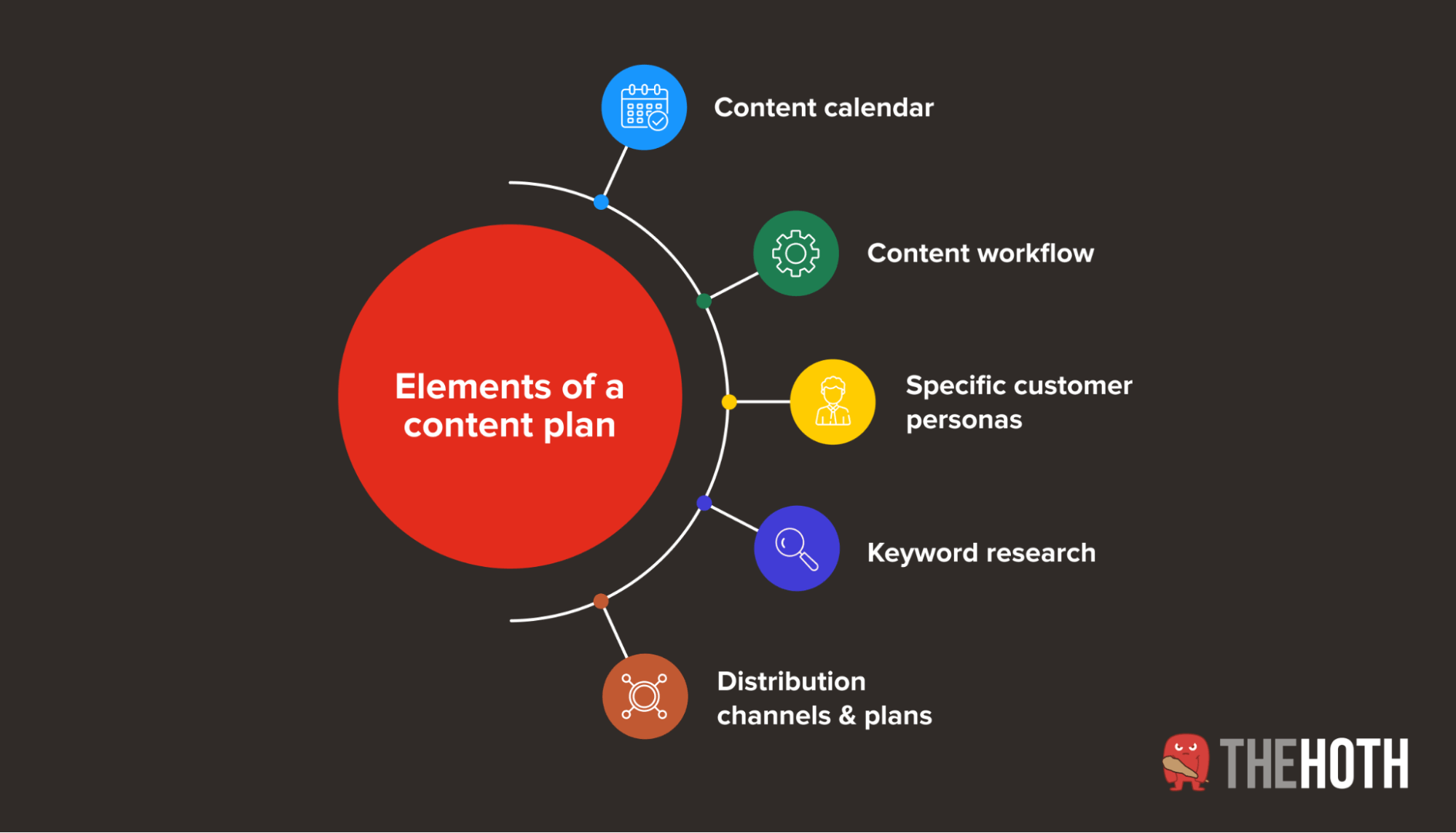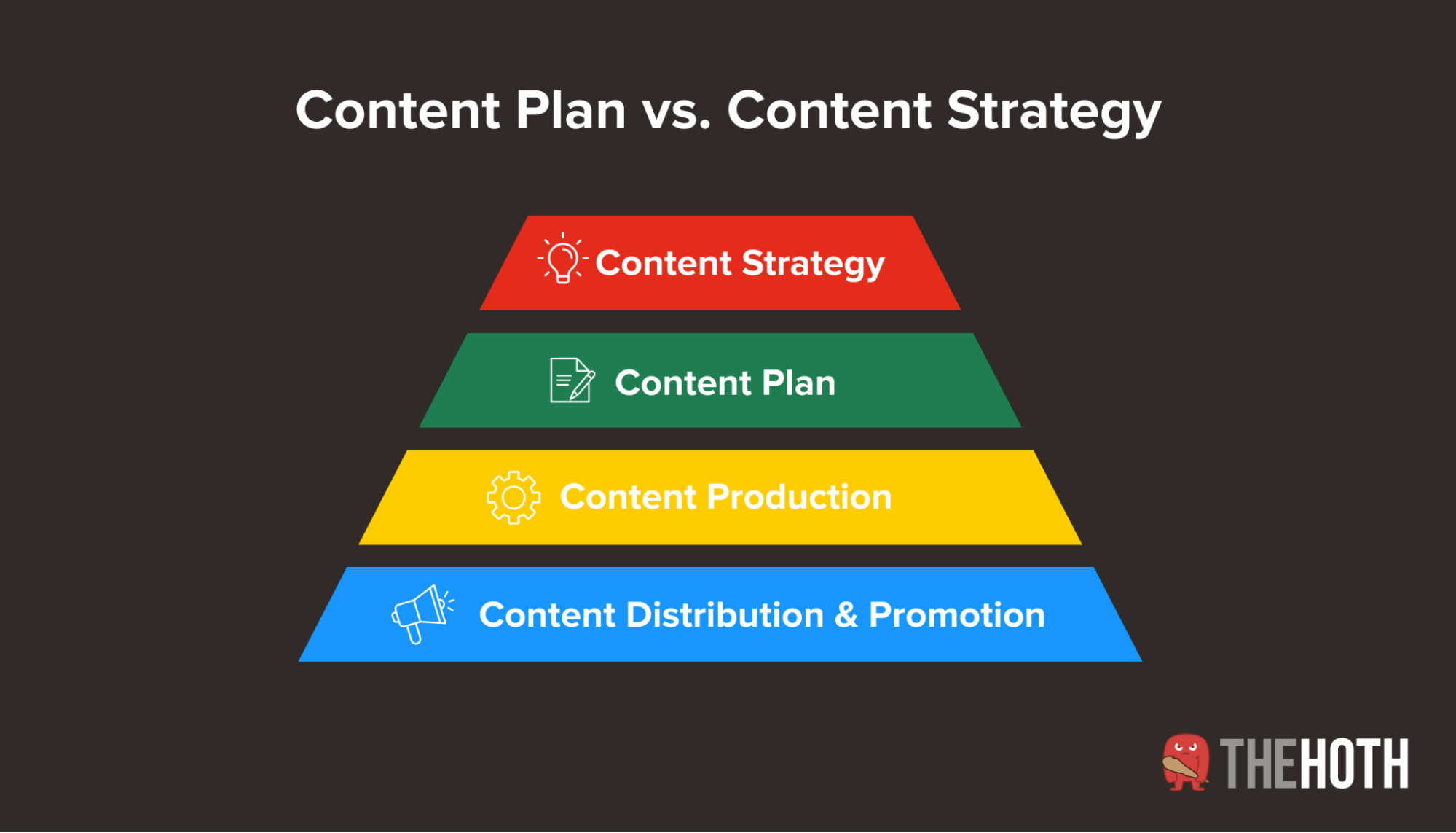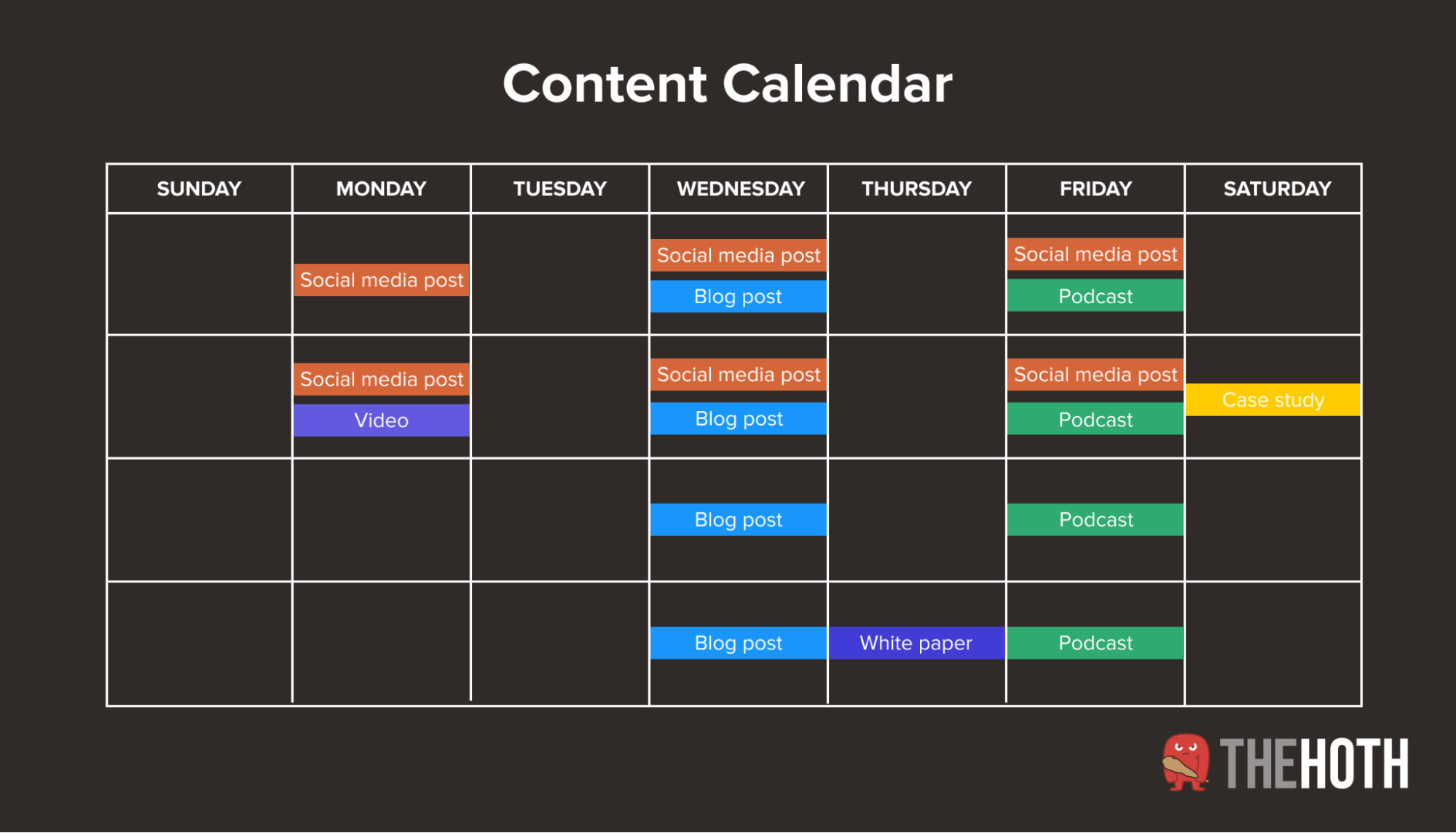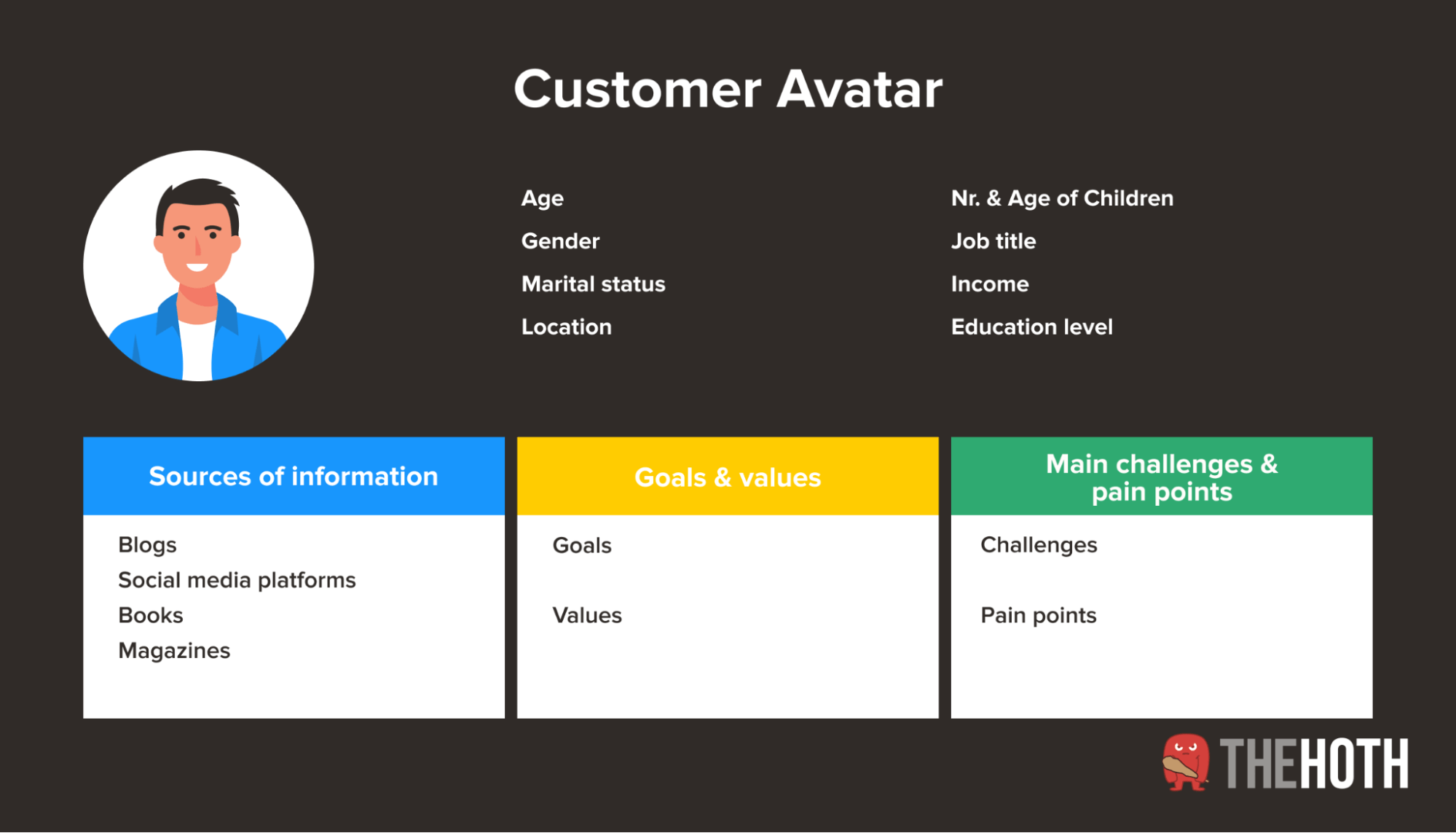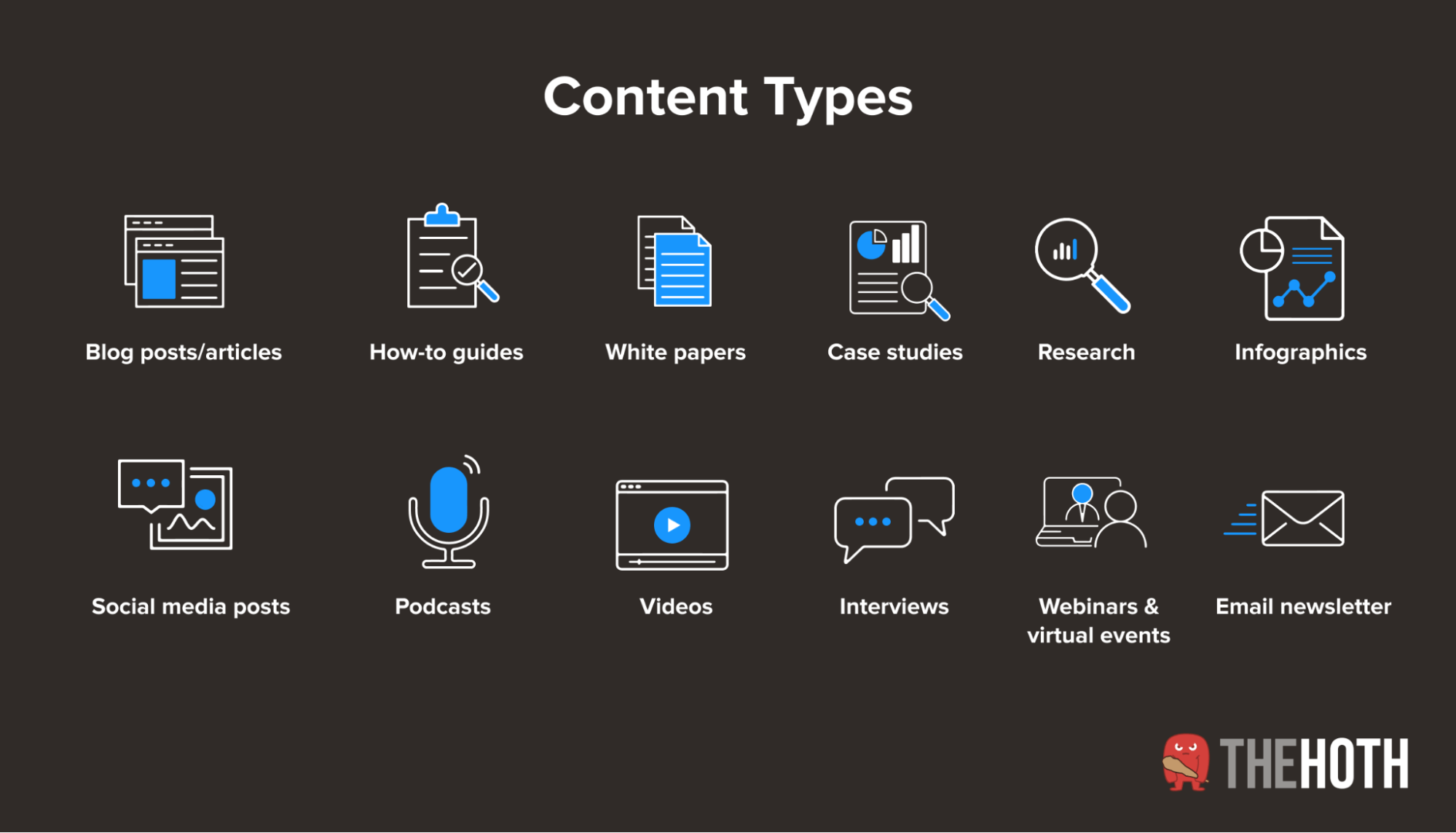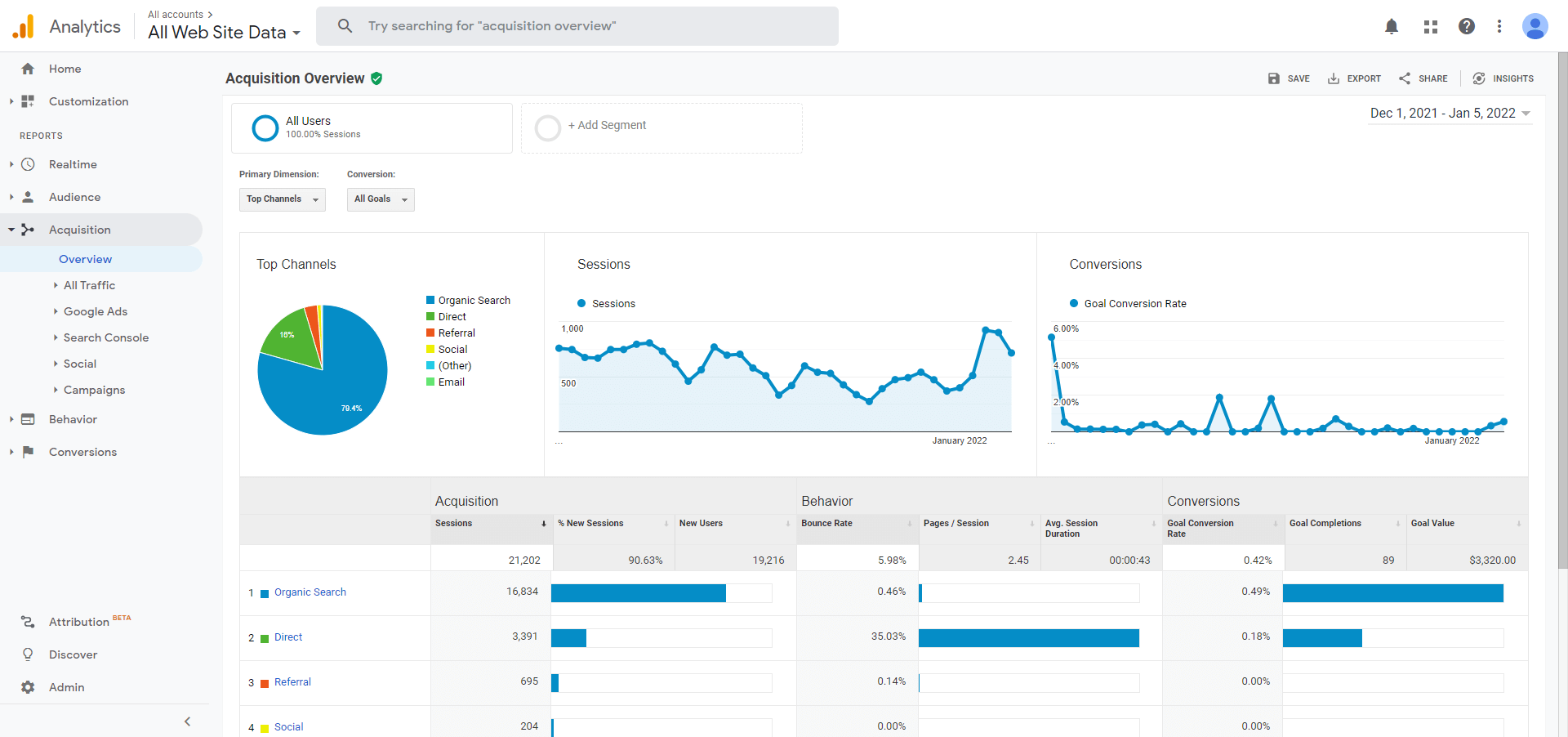Quick Links
In 2021, 82% of businesses used content marketing — and it’s easy to see why.
Good content marketing draws in more of your ideal customers, helps them solve their problems, entices them to purchase, and even keeps them engaged after the sale.
The problem, however, is keeping up with producing quality content. It’s easy to let your content marketing fall by the wayside amidst everything else in your company.
A content plan can be your greatest asset in fixing this problem.
Below, we’ll explain what a content plan is and why you need it. Then, we’ll go over the steps involved in creating a successful content plan that suits your business before concluding with a few tips on measuring and improving its performance.
What is a content plan?
According to Hubspot’s 2021 State of Marketing report, the average customer views three to five pieces of content before reaching out to a sales rep.
Writing random blog posts and filming the occasional short video won’t cut it. Content production needs to be systematic and strategic — it should meet customers where they are, educate them, and solve their problems to build trust and authority.
That’s where a content plan comes in.
A content plan consists of all your content creation ideas, outlines where they fit in on various marketing channels, and tools that you’ll use to execute your content marketing strategy.
Here are a few examples of marketing assets that you might include in your content plan:
- Planned blogs, videos, and whitepapers
- Podcasts
- Webinars and virtual events
- Ideal customer persona
- Content management systems
- SEO tools
- Social media platforms
- Email marketing software
- Analytics software
Your content plan lays out the content you plan to create, which platforms you’re making it for, and how you plan to promote the content.
It makes content creation efforts more predictable and feels less chaotic.
You can — and should — share your content plan with everyone on your marketing team, including writers. That way, everyone has everything they need to collaborate and facilitate effective content creation.
Content plan vs. content strategy: What’s the difference?
Content plan and content strategy sound similar, but they’re not.
Your content strategy comes first, laying the foundation for the content plan. It outlines your high-level vision for content efforts and goals, along with how those help you achieve business objectives.
Within your content strategy, you’ll define broader goals for content, messaging, voice, and distribution.
Only after you create a content strategy can you start planning your actual content. The content plan helps you execute the strategy by covering the nitty-gritty, such as what content formats you’ll use (audio, blogs, and so on), what topics you’ll cover, and when you’ll publish.
The strategy keeps the plan on track. It helps you plan out content that stays consistent in terms of messaging.
4 reasons to create a content plan
Content plans keep you organized as you pursue the goals outlined in your content strategy. That offers several advantages, like streamlining your overall content marketing efforts.
Streamlines and improves your content marketing efforts
A content plan lays everything out in front of you. There’s less thinking involved once content production rolls around — you can put more energy toward creating sharper, more helpful content in less time.
You can also share a content plan with others on your marketing or content team. Delegation is easier when other team members know exactly what they need to do. Plus, other team members can easily pick up content production efforts if someone needs help.
You can get multiple people involved at the content planning stage — it doesn’t have to be a solo endeavor. More diverse input while planning content production can help you uncover content opportunities you may otherwise have missed.
Keeps you from losing focus, procrastinating, or postponing things
It would be impossible to be consistent in the long term if you’re trying to create blog posts, podcasts, and videos without a plan.
A content plan will provide you and your team with the framework to churn out content every week.
Plus, if you’re the one creating the content, it may be hard to find the time. Writing goals down has been shown to increase the chances that you actually do the task. It’s there in front of you, reminding you to stay on track.
So, if you create a content plan, you and your team are more likely to follow through on each piece of content.
Helps you budget your team’s time
A vital component of any content plan is an editorial calendar.
Building an editorial calendar solves the “not enough time” issue. You can budget your team’s time to allow for content creation. If something more important comes up, it’s easy to rearrange things.
For instance, a current event in the news might offer an amazing content opportunity. Thanks to your editorial calendar, you can reschedule other pieces of content around time-sensitive events.
Identifies content improvement opportunities
A content plan gets granular with everything you’re going to create. The process can help you identify topics and angles you can cover to fill in gaps in your existing website.
Once you’ve started implementing a content plan, you can analyze as you go to see how things perform. From there, you can find areas to improve.
For instance, your analytics might show that a particular content format generated the most leads. That’s crucial info for your content planning and creation efforts in the future.
You might also discover that you don’t create content frequently enough. Next time around, you might increase the cadence of your content production to keep prospects interested.
How to create a killer content plan
Content production is the foundation of any content marketing strategy. You can’t promote or share content that doesn’t exist yet.
A great content plan helps your team consistently churn out awesome content.
Here’s how to create a killer content plan.
Define your goals
Your goals inform everything about your content plan and help measure your success. They’re critical in determining your content formats, subjects, and marketing channels.
For instance, one of your goals might be to increase engagement on social media platforms by 30%. With that in mind, you’d focus on increasing original social media content and sharing other content through social media channels.
Your goals should follow the SMART methodology:
- Specific: Specific goals are easier to focus your efforts on achieving than vague ones.
- Measurable: You won’t know if you’re achieving your goals if you can’t track progress.
- Attainable: Your goals should be lofty but realistic.
- Relevant: Make sure your goals align with your organization’s objectives.
- Timely: You need to provide yourself enough time to reach your goals, but not too much time.
Know your budget
The more money you invest in content, the more results you’re likely to achieve. You can spend more resources on understanding your customers, producing better content, and getting that content in front of more eyeballs.
However, if you’re just starting your content marketing efforts, it might be a better idea to start small, with a single channel like a company blog and SEO for distributing content.
You want to make sure your content plan produces an adequate return based on your budget and goals.
Once you start to see consistent results, it might make sense to scale up and pump out more content on various channels.
Determine your target audience
Now, you need to determine your target audience for your content.
Your target audience could be existing customers if you want to help onboard them and nurture customer relationships.
Use your experience in dealing with customers (including their priorities, challenges, and more) to create a couple of customer avatars.
These are fictional representations of your ideal customer, created by gathering demographic and psychographic data.
If you’re looking to expand and attract a completely new set of customers, you need to use your imagination when creating a buyer persona.
Identify customer pain points and challenges
Once you know who your audience is, you need to understand what they need help with.
After all, content should build your authority by showing your audience that you can help solve their problems.
Here are just a few ways to uncover these problems:
- Browsing relevant online forums or social media groups: Forum users talk a lot about their problems and pain points. Browsing relevant forums can provide you with a goldmine of customer information.
- Blog comments: See what readers comment on your blog.
- Surveying customers: Survey current customers to discover their pain points.
- Researching competitors: This includes their websites, content, social channels, and more.
- Online reviews: Customers talk about how a product or service helped/didn’t help them solve their problems in online reviews.
- Your sales and support teams: Your sales and support teams talk with customers about their problems all the time. They likely have some good insights.
Once you know your audience’s core pains and problems, it’s easier to find the right keywords through keyword research when you have an idea of what they’re searching for.
From there, you can create great content that helps your audience and is easier for them to find.
Audit your existing content
Chances are, you already have some blog posts floating around your website or other channels. Performing a content audit helps you find what works and what you need to improve.
You can find ways to refine and repurpose them for your new content plan — saving time and money in the process.
A content audit also helps you find gaps in your existing content. Existing assets might be weak, or you might not even have content covering a major pain point in your target audience.
These gaps can inform your brainstorming, which comes next.
Generate content ideas
Now comes idea generation. You’ll want a firm understanding of your audience and their problems if you want to develop effective content ideas.
This means going back to the list of problems and keywords you created.
One way to do this is to go back to your list of problems and keywords, then create “buckets” for each broad topic area with specific content ideas.
Include members from other teams, like customer support, in brainstorming topics — especially if writing for existing customers.
Decide what types of content to use
With content ideas in hand, you now have to decide what content types you should use.
Different people like different content types. Some prefer videos, while others like blog posts or podcasts. Some content ideas may simply work better in one format over another.
If you have data and analytics gathered from past content, then you have a helpful resource in picking the right content types. You can see what worked well before and, more importantly, what didn’t work.
Figure out how to produce the content
There are three ways to produce your content:
- In-house
- Independent contractors
- Agencies
In-house can work well if you already have a team available to work on content efforts.
However, most marketing teams don’t have the capacity to do that — and hiring more employees is a long and expensive process for the company.
Hiring individual freelance writers can be a more flexible approach. You can hire as many or as few as you need to knock out your content.
Still, you may need to spend time and resources managing these independent contractors. It’s also possible that there may be issues with content quality or timeliness.
That leaves you with agencies. An agency can take on all your content production efforts with much less management than independent contractors. The larger investment is often worth it — they’re almost like an in-house team of marketing experts without the difficulties of onboarding an entire set of new employees.
If you need help producing high-quality content, we’ve got you covered. With The HOTH’s content writing services, including both HOTH Blogger and HOTH Web Copy, you’ll never struggle to follow your content plan again.
Create your editorial calendar
As we discussed earlier, your editorial calendar offers your team a visual way to schedule work and monitor progress on content pieces daily, weekly, and monthly.
You can make a note of who’s working on what, which channels you’re using for each content piece, publishing dates, and more.
Once you generate your ideas and decide on the content format, all that’s left to do is fill in your editorial calendar for the entire period over which you’ll execute your plan.
Promote your content
New content alone won’t do much unless you drive traffic to it — and that means promoting your content through various digital marketing avenues.
Determine the proper mix of reliance on email marketing, social media, SEO, and paid traffic, like Google Ads.
Measure and analyze
At last, your content is out there for your customers and prospects to read.
Now, you want to start measuring and analyzing your content’s performance. You should do this regularly so you can adjust your content plan as needed. This will also inform improvements to future content marketing efforts.
In the final section, we’ll cover some tips on how to assess and improve your content plan.
How to assess and improve your content plan
Optimization is the name of the game in marketing, so it’s always good to do a retrospective on your content plans. You can find out what went well and what didn’t to improve future content efforts.
Here are some tips for assessing and improving your content planning.
Install and use analytics software
Google Analytics is one of the most powerful analytics platforms in the world, and it’s 100% free.
Ensure that you create conversion goals to track leads and sales, not just traffic.
You can also invest in another paid solution. The important thing is that you track the traffic and conversions your various content generates.
Look at the right metrics
In marketing, there are as many metrics as there are dollars to be made.
But a lot of them don’t matter, depending on the type of content.
You want to ensure that you’re only paying attention to the KPIs that measure progress toward your business goals. Otherwise, you’ll waste resources without learning anything meaningful.
For instance, imagine you’re already getting tons of traffic. However, a lot of that traffic doesn’t do anything after consuming the content.
You don’t want to pay much attention to traffic as a metric. Instead, look at your conversion rate and try to improve that.
Note which assets and channels perform best (and worst)
Once your content is out there for a while, you’ll be able to see if any pieces are doing especially well.
Make a note of these top-performing content pieces and set aside time to study them — you might glean valuable insights about your target audience’s problems or preferred content formats.
You should also save these content pieces for the future. You can build on them further or repurpose them into other forms of content. For example, you could turn a series of emails into a long blog post.
It can even work well as a template to inform future content creation — a guidepost telling your writers “more content like this, team.”
You should also pay attention to which channels provide the most return on your content investment. You can then focus your investment and efforts accordingly.
Effectively execute your content strategy
Content strategy is the first step in your content marketing efforts — but you need a content plan to execute that strategy consistently and effectively.
And a content plan goes way beyond just a list of content ideas. What matters most is understanding your audience and their problems deeply so that you can create content that will resonate with them.
Nail this, and generating, producing, and promoting content will feel much more natural.
If you’re having trouble creating a content plan that moves your organization closer to your content marketing goals, book a call with us today.







